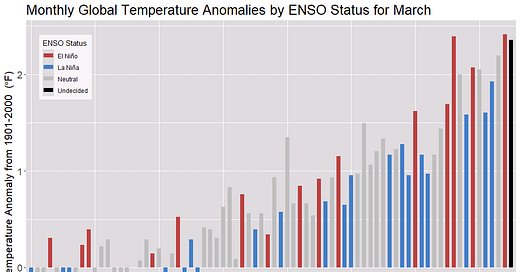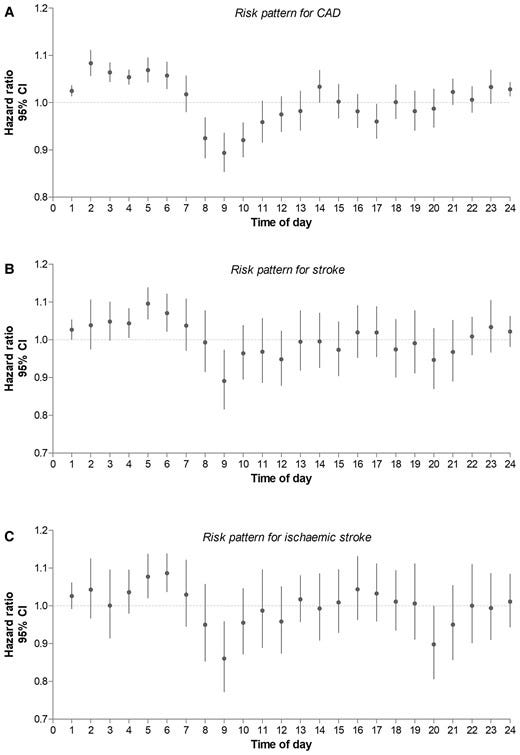As I see it…
If you’d like to get a sense of how bureaucracy has grown in higher education and the challenges of working with NSF grants, read Funded Research at a US University: Death by Bureaucracy (4/6/2025). Here is an anecdote from the article related to campus bureaucracy.
Some equipment—such as laptops and other electronics—is subject to scrutiny by the bloated ITS bureaucracy, which is empowered to make decisions for the researchers despite having zero competence in the subject matter of PI’s work. Purchasing USB flash drives for undergraduate chemistry labs can turn into a protracted power struggle involving meetings with the ITS and risk management departments, forms, requests, and appeals to the highest-levels of the administration—and the outcome of all that is uncertain (our department lost such a fight and was not allowed to procure the most-economical and most-suitable equipment).
On our campus, ITS decided that all faculty should get laptops instead of desktops. They made this decision without conducting a survey among the faculty and staff. You can then get docking stations to connect to a better keyboard and larger screen. Ergonomics used to be a thing (I really like my ergonomic split keyboard), but I guess everyone can now just type on a small laptop keyboard and not worry about it. Everyone receives the same laptop, whether they only use Word and a browser or work in data-intensive programs like GIS. I was able to get a desktop, but I had to argue for it. Hopefully, ITS is more responsive to how folks want to work at other colleges and businesses.
Anyway, that was an aside. Here is another clip from the article.
For example, the biographical sketch now needs to be prepared using yet another web portal (SciENcv) in which the required data must be entered in little boxes. The PI needs to create an account for herself, and then, in order to delegate the task of data entry to an admin, must go through another involved process of adding the admin to the system. Once the data are entered, the PI must login again and “certify” it before the generated biographical sketch can be uploaded to research.gov. The upshot of all this is that something that formerly required minimal effort of the PI—10 minutes tops—has now become a significant task requiring hours of combined effort of the PI and several admins (compare my most recent biographical sketch prepared through this procedure with my biographical sketch from 2012 and see if you can find any justification for the more complicated procedures and the accompanying cost of implementation).
As I see it, the appification of everything (related to enshittification) is making our lives worse. In the example above, the new app to collect PI information was really designed to make the lives of NSF workers easier at the expense of the PI. Meanwhile, adding a box here and there to collect more information, even if it's not necessary, becomes effortless. One nice thing about paper forms was that people tried to keep things to one page, maybe front and back, whereas online forms allow for unlimited additions.
We have so many apps or online forms that we had to make a page to list them all: apps.ithaca.edu. There are almost 100 links in the list at the bottom of the page. In the past, if you needed to reserve a room, you called someone. Now you need to figure out how to navigate 25LivePro. Most apps are bloated and hard to use, but daily users will say they're easy. Indeed, the bureaucracy, not the faculty and staff, benefited from their setup.
These apps haven’t saved any time for most people, like myself, and generally cause more aggravation than anything. Beyond the time sink and aggravation of all these apps, I think they have had a deteriorating effect on the culture or feel of the workplace. People interact with each other less. The last time I had an HR question, I had to send an email to a general HR address. When I received a response, it didn't even include the name of the person who responded.
We need to critically examine the impact of technology, especially apps and online forms, on the workplace, identifying what is beneficial and what needs to be eliminated, as the overall impact is detrimental, even if it makes one particular person's job easier and maybe even if, on the surface, it saves money. Additionally, we should cease the collection of information that no one needs, wants, or ever uses just because we can.
I’m curious: do others have the same issues? I’d like to hear your stories.
How hot was March 2025?
Here are your monthly graphs of global average temperature. The first graph is the time series for March. The expectation is for March 2025 to be an ENSO neutral month, and so the anomaly is where we might expect it to be. Note that it is just a threshold that classifies a month as El Niño or La Niña, and the magnitude can vary. Additionally, I'm not sure what happened last month, but my ENSO status matches NOAA (see here).
The second graph is for all months. We have been going through a neutral period, and temperature anomalies are about where we would expect them to be, keeping in mind that warming is not linear but quadratic. Here is what NOAA says about March.
March 2025 was the third-warmest March on record for the globe in NOAA's 176-year record. The March global surface temperature was 1.31°C (2.36°F) above the 20th-century average of 12.7°C (54.9°F). This is 0.03°C (0.05°F) less than the record-warm March of last year. March 2025 marked the 49th consecutive March with global temperatures, at least nominally, above the 20th-century average.
Global public debt
Worth noting from the IMF article Rising Global Debt Requires Countries to Put their Fiscal House in Order. Amid heightened uncertainty, policymakers will need to deal with complex trade-offs between debt, slower growth, and new spending pressures. (4/23/2025)
Stats you can use
Exercise in the late morning. This recommendation comes from the paper Setting your clock: associations between timing of objective physical activity and cardiovascular disease risk in the general population (11/14/2023).
Overall, participants with a tendency of late morning physical activity had a lower risk of incident coronary artery disease (HR: 0.84, 95%CI: 0.77, 0.92) and stroke (HR: 0.83, 95%CI: 0.70, 0.98) compared to participants with a midday pattern of physical activity. These effects were more pronounced in women (P-value for interaction = 0.001). We did not find evidence favouring effect modification by total activity level and sleep chronotype.
Interestingly, the effects were different, or stronger, for women. I wouldn’t have expected that. In the graphs, the time of day is the exercise time. Values above 1 on the y-axis indicate a higher risk, while values below 1 indicate a lower risk.
Graph of the week
This one is from The genetic architecture of and evolutionary constraints on the human pelvic form (4/11/2025). Most of the article is behind a paywall, but the graph covers what you need to know. The conclusion.
Our study provides fresh insights into a 60-year-old debate in human evolution. Beyond pressures imposed by childbirth, as initially proposed by the obstetrical dilemma hypothesis, our findings suggest that, rather than just locomotion, pelvic floor health may have played a significant role in reducing birth canal width in our transition to bipedalism. Our observed genetic correlation between birth canal width and infant and adult head width provides support for the coevolution of the human brain and pelvis.
Graph C, which illustrates the evolutionary compromises, is the interesting graph. A birth canal that is not too big or too small, but just right.
Marriage matters to kids
In my post, Why is there a racial wealth gap? (1/16/2024) I point out the differences in children living with both parents by race. The graph illustrating these differences is worth revisiting:
I repost this because of the graph below from Family Structure Matters for Rich Kids, Too (1/17/2025). At every income level, kids are less depressed in families with intact marriages. But also notice that the depression rates are almost the same for all income levels in married households. The article has two additional findings. Kids generally do better in married households, and marriage rates differ by race.
Data center competition
Businesses—in this case, data centers—must love this: Colorado lawmakers consider 30-year tax breaks for data centers (4/23/2025). The situation begins to resemble a downward spiral. At what point are states making little to no money for a handful of jobs and more development? Anyway, data centers are a big deal when states are passing legislation to give them tax breaks.
The spinning CD
Good song, weird video.
Please share and like
Sharing and liking posts attracts new readers and boosts algorithm performance. I appreciate everything you do to support Briefed by Data.
Comments
Please let me know if you believe I expressed something incorrectly or misinterpreted the data. I'd rather know the truth and understand the world than be correct. I welcome comments and disagreement. We should all be forced to express our opinions and change our minds, but we should also know how to respectfully disagree and move on. Send me article ideas, feedback, or other thoughts at briefedbydata@substack.com.
Bio
I am a tenured mathematics professor at Ithaca College (PhD in Math: Stochastic Processes, MS in Applied Statistics, MS in Math, BS in Math, BS in Exercise Science), and I consider myself an accidental academic (opinions are my own). I'm a gardener, drummer, rower, runner, inline skater, 46er, and R user. I’ve written the textbooks “R for College Mathematics and Statistics” and “Applied Calculus with R.” I welcome any collaborations. I welcome any collaborations.











